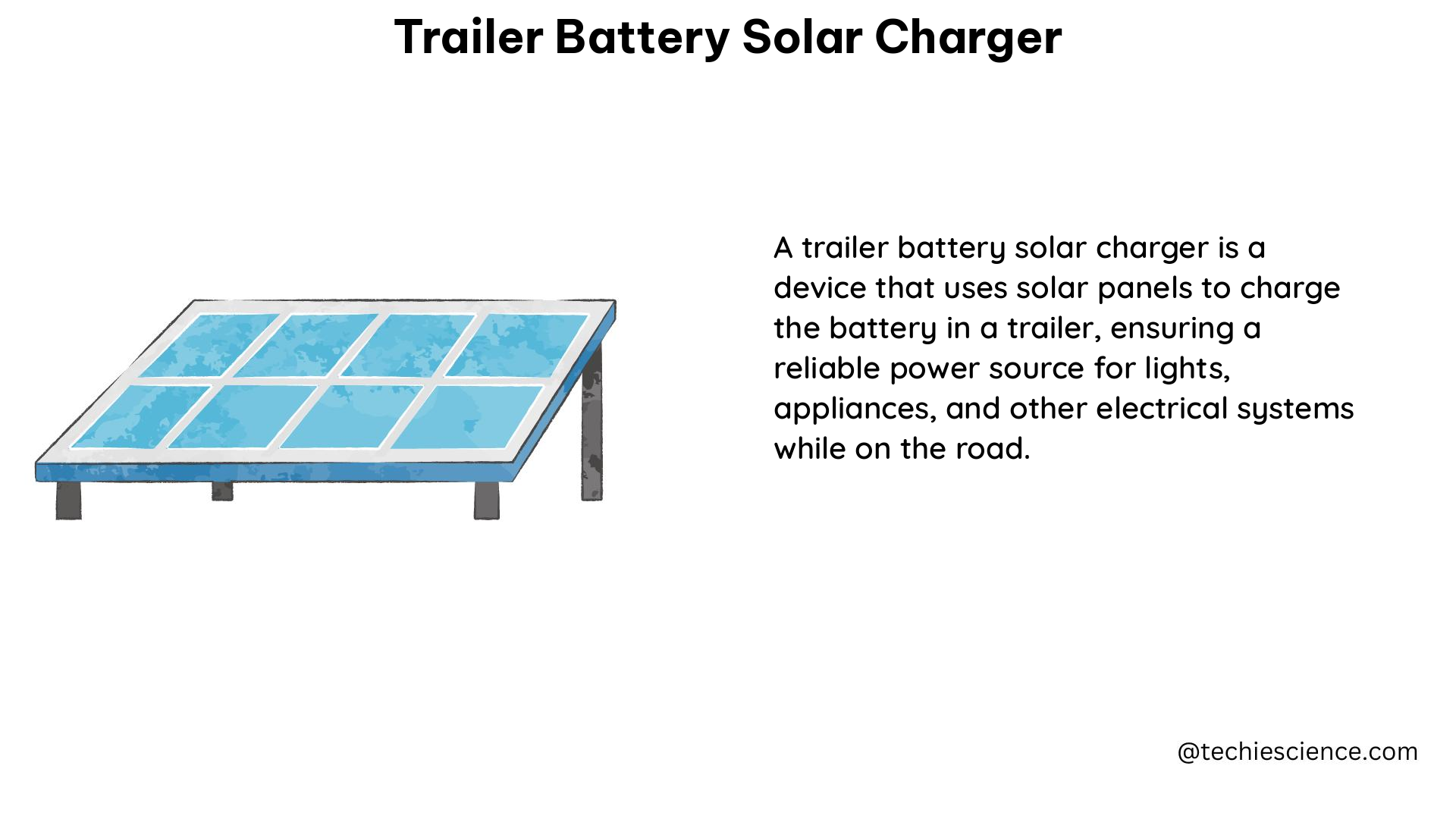A trailer battery solar charger system is a versatile and reliable power solution for outdoor enthusiasts, off-grid living, and remote work. This system typically consists of solar panels, a charge controller, a battery, and an inverter, working together to convert sunlight into usable electricity. Whether you’re powering your RV, trailer, or off-grid cabin, understanding the technical specifications and building a DIY system can be a game-changer.
Estimating Your Power Needs
The first step in designing a trailer battery solar charger system is to determine your daily power consumption. This involves calculating the size of your device’s battery (in Watt-hours) and estimating your battery usage per day. Use the following formula to find your daily power consumption:
Size of Device’s Battery (Wh) x Battery Usage (per day) = Daily Power Consumption (Wh/day)
For example, if your device has a 100 Wh battery and you use 50% of it per day, your daily power consumption would be 50 Wh/day.
Selecting the Right Solar Panels

The size of the solar panel(s) you’ll need depends on your daily power consumption and the expected hours of good sun. Use this formula to determine the minimum solar panel size:
Daily Power Consumption (from Step 1) / Expected Hours of Good Sun x 2 (Standard Power Loss Variable) = Solar Panel Minimum (Watts)
As a general guideline, we recommend using 5 hours as a baseline for good sun and adjusting up or down based on your local climate and conditions. Additionally, it’s best to choose a solar panel that is 2-4 times the minimum size required to account for power losses and fluctuations in solar conditions.
Choosing the Appropriate Battery
The battery in your trailer battery solar charger system acts as a backup power source, ensuring your devices are charged even on cloudy or rainy days. To determine the minimum battery size needed, use the following formula:
Watt hours per day / 0.7 hours = Watt battery capacity needed for 1 day of use
This formula accounts for a typical 30% power loss during the transfer from the battery to your device. For example, if your daily power consumption is 100 Wh/day, you would need a battery with a capacity of at least 143 Wh (100 Wh / 0.7) to ensure one day of use.
Technical Specifications
Here are some typical technical specifications for a trailer battery solar charger system:
| Component | Specification Range |
|---|---|
| Solar Panels | 10 watts to several hundred watts |
| Charge Controller | 10 amps to several hundred amps |
| Battery | 10 Ah to several hundred Ah deep-cycle |
| Inverter | 100 watts to several thousand watts |
As an example, a 100-watt solar panel system might include:
- 1 x 100-watt monocrystalline solar panel
- 1 x 30-amp MPPT charge controller
- 1 x 100 Ah deep-cycle battery
- 1 x 1000-watt pure sine wave inverter
This system would be suitable for charging a trailer battery and powering small appliances and devices.
Building a DIY Trailer Battery Solar Charger
If you’re interested in building your own trailer battery solar charger, follow these steps:
- Choose your solar panels: Select the number and size of solar panels based on your power consumption needs. Ensure the panels are designed for outdoor use and can withstand harsh weather conditions.
- Choose your charge controller: Select a charge controller that is compatible with your solar panels and battery, and is rated for the correct amperage and voltage.
- Choose your battery: Select a deep-cycle battery that is compatible with your charge controller and has enough capacity to meet your power needs.
- Choose your inverter: Select an inverter that is compatible with your battery and has enough power capacity to meet your requirements.
- Assemble your system: Connect the solar panels to the charge controller, the charge controller to the battery, and the inverter to the battery. Follow the manufacturer’s instructions for proper installation and wiring.
- Test your system: Once assembled, test the system to ensure it is working correctly. Check the voltage and current readings to verify that the battery is charging properly.
Building your own trailer battery solar charger can be a rewarding and cost-effective way to ensure a reliable power source for your outdoor adventures.
References
- Tips for solar charging your data collection – MERL Tech
- 7 Steps to Determine if Your Solar-Charged Power Supply Has a…
- How much Solar do I need for my RV? – The BoonDocker
- Measuring Solar Panel Charging Rate – Escape Forum
- How Much Solar Do I Need On My RV? – The Fit RV

The lambdageeks.com Core SME Team is a group of experienced subject matter experts from diverse scientific and technical fields including Physics, Chemistry, Technology,Electronics & Electrical Engineering, Automotive, Mechanical Engineering. Our team collaborates to create high-quality, well-researched articles on a wide range of science and technology topics for the lambdageeks.com website.
All Our Senior SME are having more than 7 Years of experience in the respective fields . They are either Working Industry Professionals or assocaited With different Universities. Refer Our Authors Page to get to know About our Core SMEs.